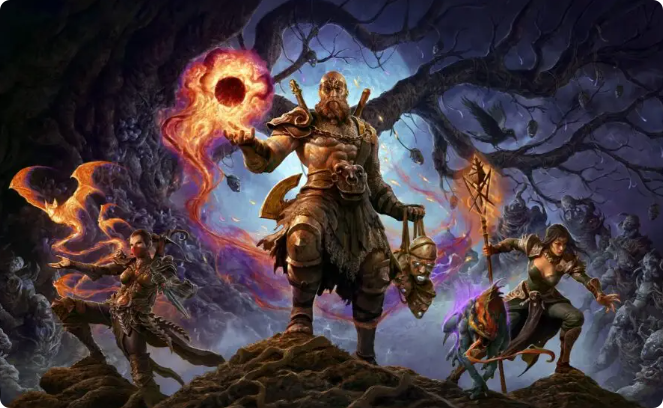This article explores the Diablo IV Gold open-world structure of Diablo 4, the design of its major regions, and how Blizzard has constructed a world that feels alive, dangerous, and constantly evolving.
Breaking the Chains of Linearity
Previous Diablo entries were designed around segmented acts and instanced zones. While this offered tightly controlled pacing and narrative beats, it limited player agency and exploration. Diablo 4 breaks away from this tradition by introducing an open-world Sanctuary, allowing players to chart their own path and explore the world in a nonlinear fashion.
The game features five major explorable regions at launch, each accessible from the start (with the exception of high-level areas that present steep challenges). This freedom of movement means players can tackle story quests, dungeons, and world bosses in whatever order suits them, offering personalized pacing and strategic exploration.
The Five Regions of Sanctuary
Each region in Diablo 4 is meticulously crafted with distinct biomes, cultures, enemies, and lore. This diversity not only enhances the visual palette but deeply influences gameplay and narrative.
1. Scosglen
Inspired by Celtic and Norse motifs, Scosglen is a fog-drenched region of rugged coasts, haunted forests, and ancient druidic rituals. It is the homeland of the Druid class and features storm-swept cliffs, mossy ruins, and eerie creatures lurking in the shadows.
The region is alive with environmental storytelling—from drowned villages to sacred groves overtaken by corruption. Scosglen reinforces the theme of nature turned hostile, offering a melancholic beauty and constant danger.
2. Fractured Peaks
A mountainous, snow-covered expanse filled with ruined fortresses and hidden monasteries. Fractured Peaks is home to the Church of Light, a militant theocracy at odds with the demonic tide.
Exploration here is treacherous—avalanches, ice caverns, and undead horrors stalk travelers. It’s also where much of Diablo 4’s religious narrative unfolds, offering insight into Sanctuary’s moral decay.
3. Dry Steppes
A harsh, arid desert wasteland where survival is won through brutality. Dry Steppes is filled with bandits, fallen tribes, and merciless warlords. It reflects the game's grittier tone—scarcity, struggle, and blood-forged alliances dominate its politics.
This region emphasizes PvP zones, where players can challenge others for rare resources. The Dry Steppes also house several massive strongholds that must be cleansed before they become player-friendly hubs.
4. Hawezar
A poisonous swamp of alchemical horrors, Hawezar is a region overrun by witchcraft, disease, and death cults. Its slow decay permeates every inch—from sunken villages to corrupted marshes.
Gameplay here leans heavily into poison, curses, and attrition-based enemies, creating an atmosphere of dread and slow suffocation. Hawezar is ideal for players who enjoy slower-paced, methodical exploration and lore-rich quests.
5. Kehjistan
A scorched desert once ruled by powerful mages and now home to the remnants of ancient demonic wars. Kehjistan’s ruined cities and cursed temples hold powerful artifacts and sinister secrets.
As the site of previous Diablo games’ major battles, Kehjistan offers continuity for series veterans. It’s also where Lilith’s cults are strongest, making it a critical front in buy duriel mats the main campaign.
